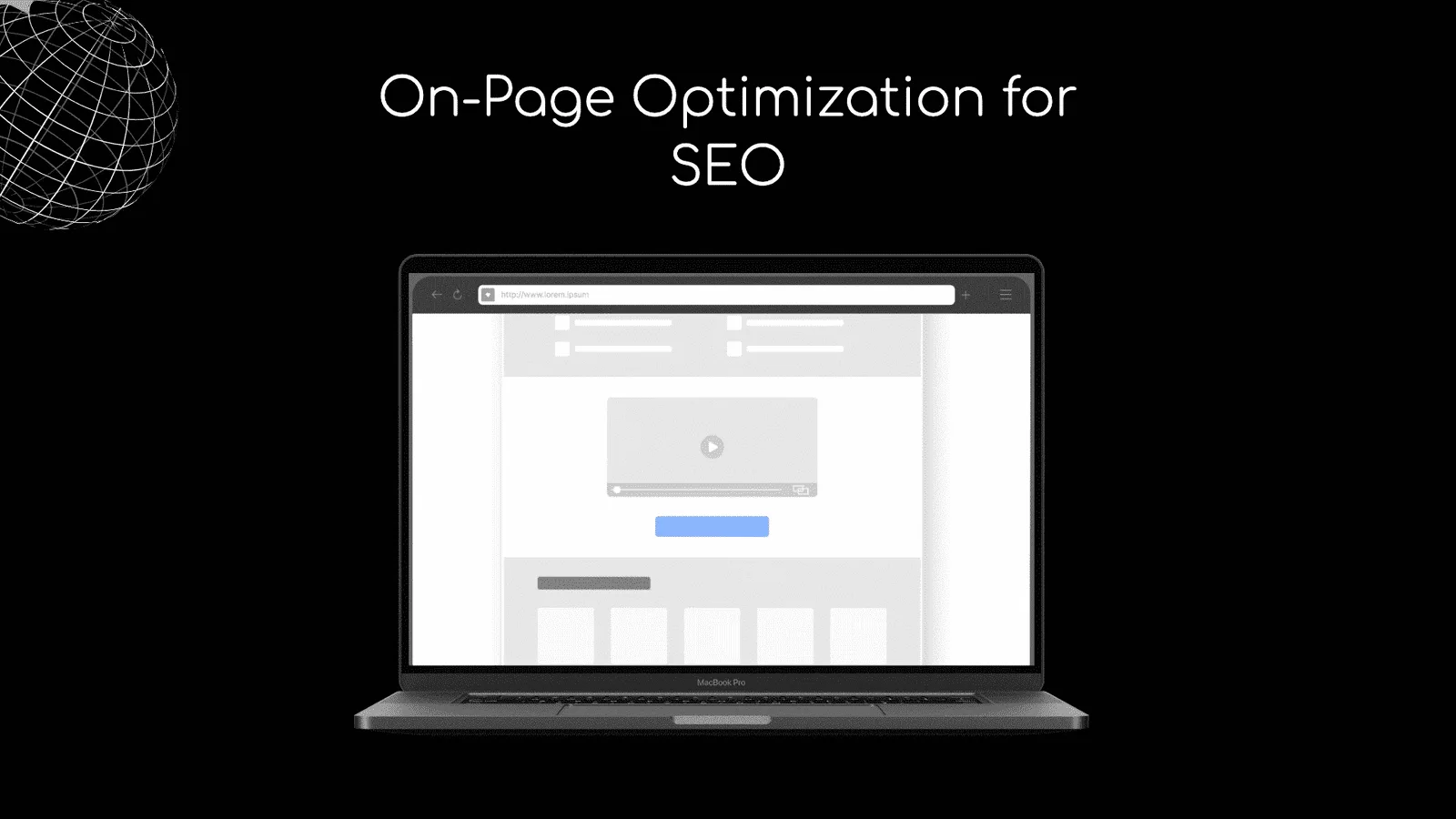On-Page SEO helps Google see what content you have online in the first place and helps them understand what they are trying to achieve. Google knows your content better and makes it more valuable to search engines and therefore leads.
In fact, SEO improves user experience when done properly. I’ve compiled a list of the most useful page optimization tips that you can apply to your site, and I’ll also explain how they are vital to your SEO strategy.
The Importance of On-Page Optimization for SEO
On-page optimization is a crucial aspect of Search Engine Optimization (SEO) that involves making adjustments to a website’s content and structure to improve its rank on search engine results pages. It’s vital to note that on-page optimization differs from off-page optimization, which deals with external factors like link building and social media marketing.
The importance of on-page optimization for SEO cannot be overstated. It helps search engines understand what each page on a website is about, which improves its rank and attracts organic traffic.
By including target keywords in headlines, body texts, and meta descriptions, optimizing image alt tags, using internal linking, and including high-quality and relevant content, you can significantly boost your website’s search engine ranking, and better your business’s SEO strategy.
Request Free Review
We start by reviewing your website and then take a look at your current ranking in SERPs.
- Unlock Your Website’s Potential with Our Comprehensive Analysis.
- Outrank Your Competitors with Our Expert Insights and Recommendations.
- Ways for increasing website traffic.
- Get Tailored Recommendations to Achieve Better Results Online.
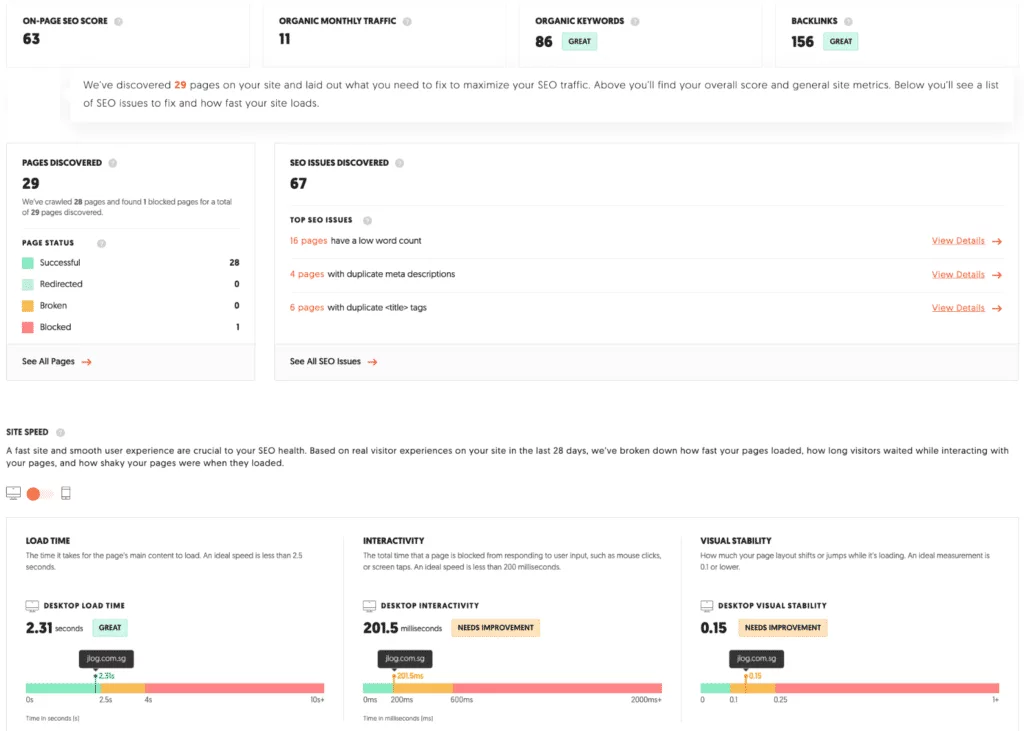
On-Page optimization Vs Off-Page Optimization
On-page optimization and off-page optimization are two different but equally important techniques used in SEO to improve website ranking. On-page SEO focuses on optimizing all the elements on a website that are under its control, such as content, tags, and URL structure, to make the website more search engine friendly.
It helps search engines analyze the website’s content and its relevance to a searcher’s query. In contrast, off-page SEO includes external factors outside a website’s control, such as social media sharing, link building, and brand mentions, to increase the website’s authority and trustworthiness.
Both on-page optimization and off-page optimization work together to improve a website’s search ranking.
A website with excellent on-page optimization may have a higher chance of ranking on search engines, but it’s off-page optimization that boosts the website’s credibility and trustworthiness, illustrating its authority within its industry.
When done correctly, a combination of on-page and off-page SEO will increase the website’s visibility, traffic and ultimately the return on investment. Therefore, it’s essential to employ both techniques to achieve an effective SEO strategy.
Benefits of On-Page Optimization for SEO
On-page optimization is crucial for improving your website’s search engine visibility, and there are numerous benefits to implementing it on your site.
First and foremost, on-page optimization allows search engines to better understand your website’s content, which increases your chances of ranking higher in the search engine results pages (SERPs). Additionally, optimizing your website’s titles, meta descriptions, and alt tags can make it more user-friendly and help attract more clicks from search users.
Furthermore, on-page optimization can help improve your website’s overall user experience by ensuring that your content is easy to read and navigate. This, in turn, can lead to increased engagement and lower bounce rates, which can further boost your website’s visibility on search engines.
By incorporating relevant keywords and optimizing your website’s structure, on-page optimization can also help attract more targeted traffic to your site. This means that visitors who arrive at your site through search engines are more likely to be interested in your content, resulting in higher conversion rates and increased revenue.
In short, on-page optimization is a vital component of any successful SEO strategy, providing numerous benefits that can help improve your website’s visibility, usability, and overall performance.
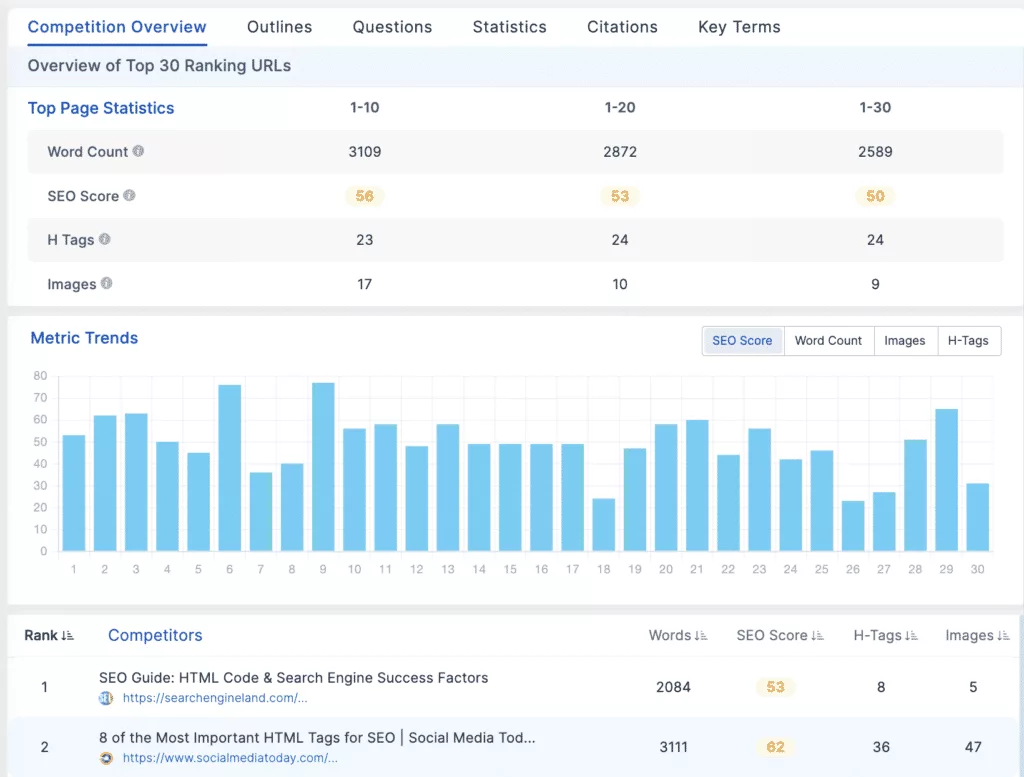
Why on-page SEO is so important?
On-page SEO is essential for improving a website’s rank on search engine results pages. With on-page optimization, search engines can understand what each piece of content on a website is all about, making it easier to match user intent.
The goal of on-page SEO is to optimize titles, meta descriptions, alt text, and other elements to ensure that search engines can crawl and index them effectively. This, in turn, can result in increased visibility for a website, higher traffic, and ultimately lead to more conversions.
Therefore, it is crucial to conduct keyword research and optimize content for on-page SEO to ensure that your website ranks well in search engine results pages.
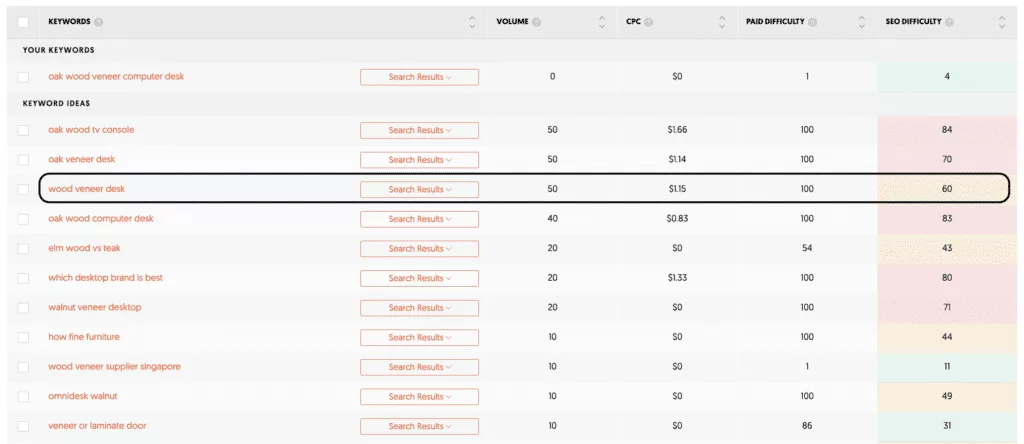
How it affects the ranking of your website
How it affects the ranking of your website is one of the most important factors to consider when it comes to on-page optimization.
By optimizing your website’s key elements, you are able to provide search engines with a clear understanding of what your website is all about. This, in turn, helps search engines rank your website based on its relevance to the user’s search query.
The better optimized your website is, the higher it will appear on search engine results pages, which ultimately leads to more clicks and traffic. Investing time and effort in on-page optimization can have a huge impact on the visibility and success of your website.
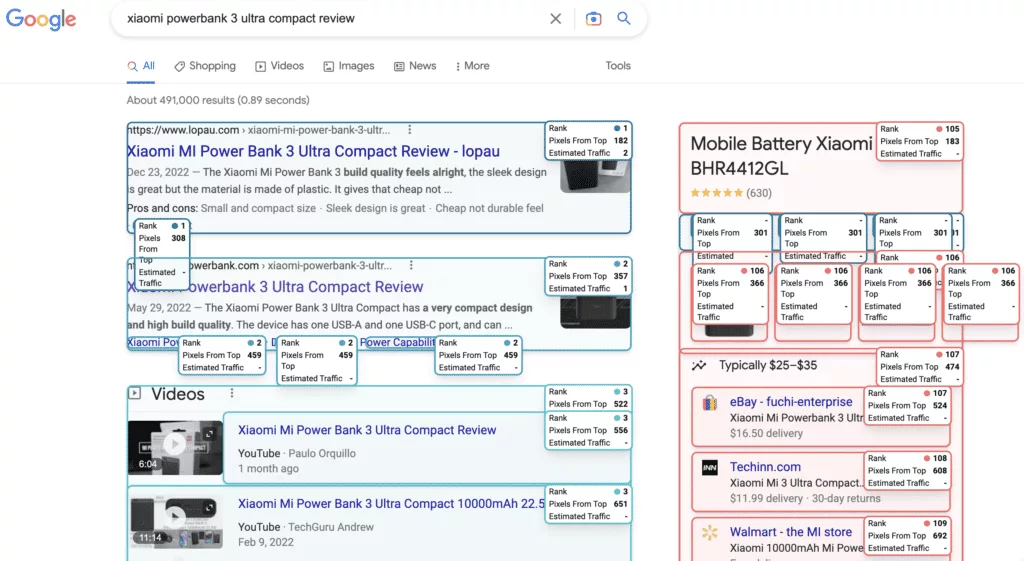
How to Optimize Your Content for On-Page SEO (+ Examples)
To optimize your content for on-page SEO, there are several things you can do to improve your website’s search ranking.
1. Choose a Primary Keyword and Use It Throughout Your Content
The first step to optimizing your content for on-page SEO is to choose a primary keyword. This is the word or phrase that best describes what your content is about. Once you have your keyword, you’ll want to use it multiple times throughout your content, including in the title, headers, body, and meta description.
Example: If your content is about “best vegan protein sources,” your primary keyword might be “vegan protein sources” or “plant-based protein”.
2. Keep Your Content Relevant and High-Quality
The content you publish needs to be high-quality, informative and relevant. It should provide value to your reader and answer their questions. Your content should also be easy to read and engaging.
Example: If your content is about vegan protein sources, you could include a list of the best plant-based protein sources, their nutritional benefits, and how to incorporate them into your diet.
3. Optimize Your Title Tag and Meta Description
Your title tag and meta description should include your primary keyword and accurately describe what your content is about. Make sure they are eye-catching and compelling to entice users to click on your content.
Example: Instead of just “Vegan Protein Sources,” your title tag could be “10 Best Vegan Protein Sources for Optimal Health” and your meta description could be “Looking to add more plant-based protein to your diet? Check out these top vegan protein sources, their benefits, and how to incorporate them into your meals.”
4. Use Headers to Organize Your Content
Headers help organize your content and make it easier to read, both for users and search engines. Use H1 tags for the main title and H2, H3, and H4 tags to divide your content into different sections.
Example: If your content is about vegan protein sources, you could use H2 tags to separate each protein source, H3 tags to describe their nutritional benefits and H4 tags to provide recipe ideas for each source.
5. Include Relevant Images and Optimize Them
Images can make your content more engaging and easier to understand. However, make sure they are relevant to your content and properly optimized. Use Alt tags to describe the image and make sure they are compressed for faster loading times.
Example: If your content is about vegan protein sources, you could include a photo of each source, a chart comparing their nutrition values, and a recipe image featuring each source.
By following these on-page SEO optimization tips, you can improve your content’s visibility, relevance, and quality. Keep in mind that SEO is an ongoing process, and you should continuously update and improve your content to keep it ranking high in the SERPs.
Include target keywords in your headlines and body
Optimizing headlines and body content with target keywords is an essential on-page SEO factor to rank higher on search engines. It includes optimizing your headlines and subheadings with the right blend of keywords to indicate to search engines what your content is about.
However, it’s crucial to keep in mind that prioritizing user experience and readability should always come first; keyword stuffing can be penalized by Google. It’s essential to use relevant and natural language that incorporates your target keywords strategically.
By creating high-quality content that meets the needs of your target audience, optimizing your headlines and body content with the right blend of keywords can help improve your search rankings and attract more qualified traffic to your website.
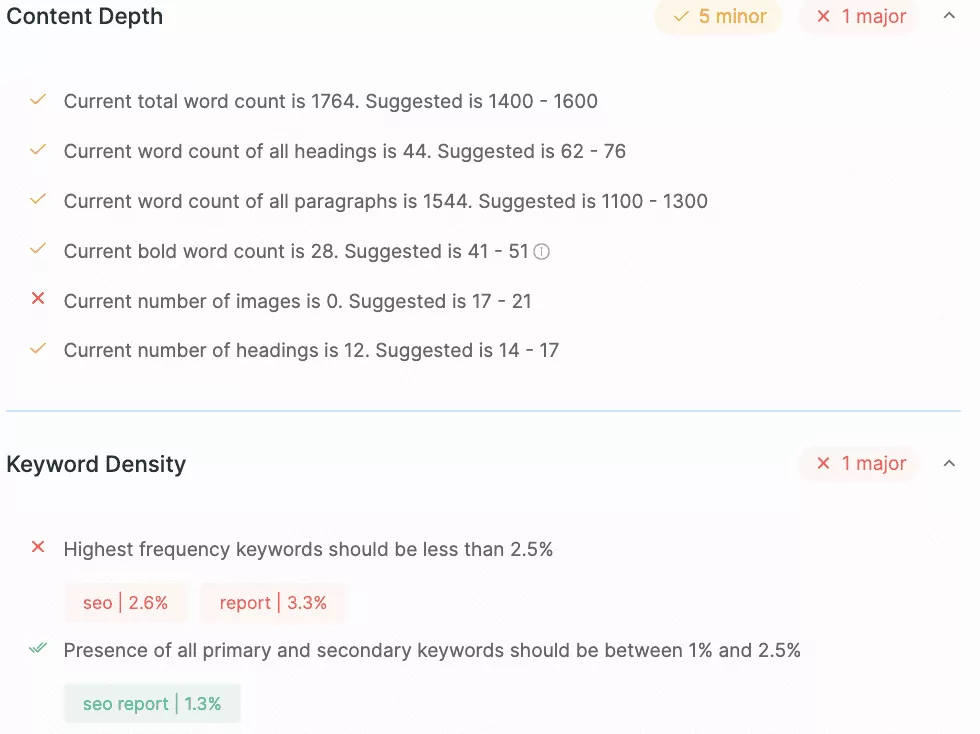
Ensure your website’s URL structure is optimized
To further optimize on-page SEO, it’s important to ensure that a website’s URL structure is optimized. This means having easily readable and descriptive URLs that reflect the content of the page. A well-structured URL also helps search engines understand what the page is about and can improve the likelihood of it ranking higher in search results.
When optimizing URLs for on-page SEO, it’s important to avoid using long and complex URLs with irrelevant strings of characters, as this can confuse search engines and users alike. Instead, focus on creating simple and concise URLs that accurately reflect the page’s content.
Incorporating keywords into the URL can also help improve search rankings, but make sure it doesn’t result in a spammy or over-optimized URL. By ensuring that a website’s URL structure is optimized, website owners can improve the overall visibility and accessibility of their website for both search engines and users.
Use descriptive, keyword-rich meta descriptions
Another important aspect of on-page optimization is the use of descriptive, keyword-rich meta descriptions. These short yet informative pieces of text appear under the website’s URL in search engine results and provide a glimpse into the content of the webpage.
Including relevant keywords in the meta description can help improve the website’s visibility in search engine results, leading to higher click-through rates and ultimately more traffic.
A well-crafted meta description can also entice users to click through to the website by highlighting the page’s value proposition or unique selling points. So, don’t overlook the importance of crafting compelling meta descriptions as part of your on-page SEO strategy.
Optimize images with alt tags and file names
Along with incorporating internal linking and anchor text, optimizing images with alt tags and file names is an essential part of on-page SEO. By using descriptive, keyword-rich alt text, search engines and users can better understand the content of the image.
Additionally, including relevant keywords in the file name of the image can further improve its chances of ranking well in search results. Not only do optimized images improve the user experience on your website, but it can also drive significant traffic to your site through image search.
However, it is crucial to avoid cramming your keyword into every image’s alt text and to ensure all users and bots can understand your website content through the image’s alt text.
Incorporate internal linking and anchor text
One important aspect of on-page SEO is incorporating internal linking and anchor text. By using descriptive keywords in anchor text, website owners can give search engines a clearer understanding of what each page is about, and improve their chances of ranking higher in search results.
Additionally, a well-executed internal linking strategy can help guide users through the website, highlighting related content and making navigation easier.
It’s important to plan ahead and use Google Sheets to map out potential categories and pages, in order to choose an effective internal link structure.
By taking the time to optimize internal links and anchor text, website owners can see improvements in search engine rankings and overall user experience.
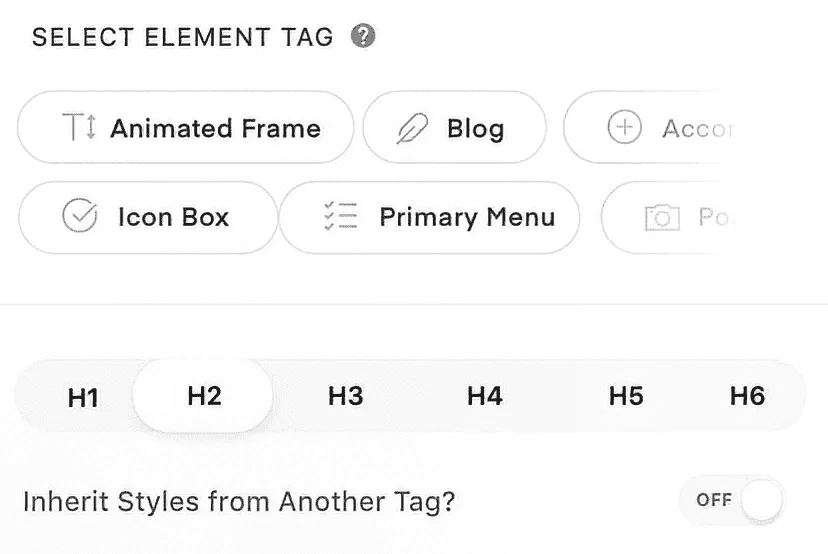
Use structured data markup to enhance your search engine listing
Structured data markup is an effective way to enhance your search engine listing and improve your website’s SEO. By using schema markups to describe the content on your pages, search engines can better understand the purpose and intent of your site, which can lead to higher rankings and increased visibility.
This approach also makes it easier for search engines to display rich snippets, which can entice users to click through to your website. Some common types of structured data include product details, reviews, and contact information.
Overall, incorporating structured data markup is a valuable on-page SEO tactic that can help improve the performance of your website.
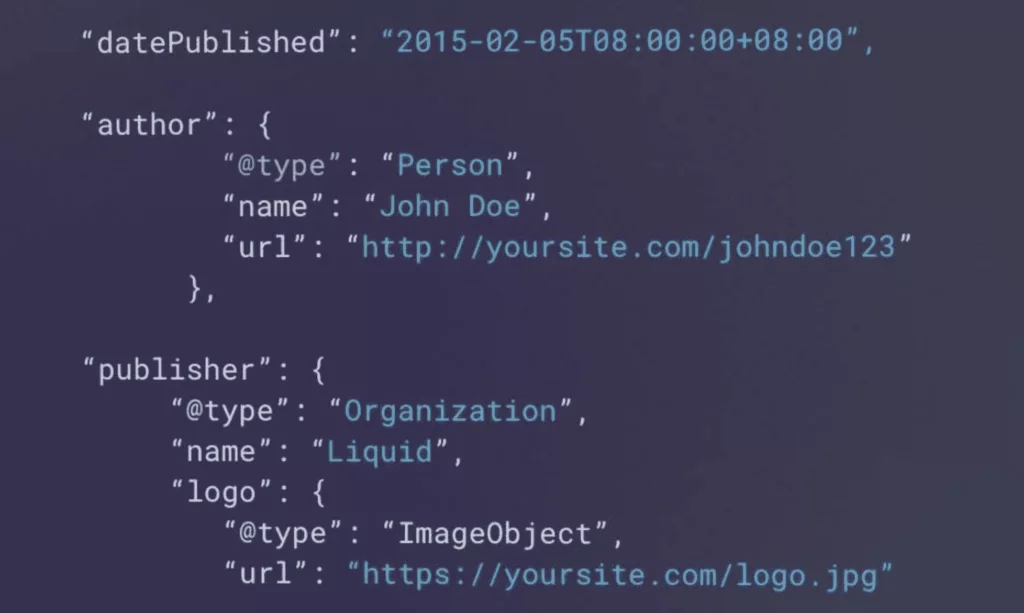
Include high-quality and relevant content
Including high-quality and relevant content is a crucial aspect of on-page SEO. It’s not enough to simply have content on your website; it must be informative, engaging, and relevant to the target audience. By providing quality content, you can increase the time visitors spend on your page and reduce the bounce rate.
In turn, this can improve your search engine ranking, as search algorithms prioritize content that provides value to the user. It’s important to focus on creating unique and original content that stands out from your competitors.
Additionally, regularly updating your content can keep your website fresh and relevant to your audience. By combining high-quality content with other on-page SEO strategies, such as optimizing meta descriptions and internal linking, you can improve your website’s search visibility and increase organic traffic.
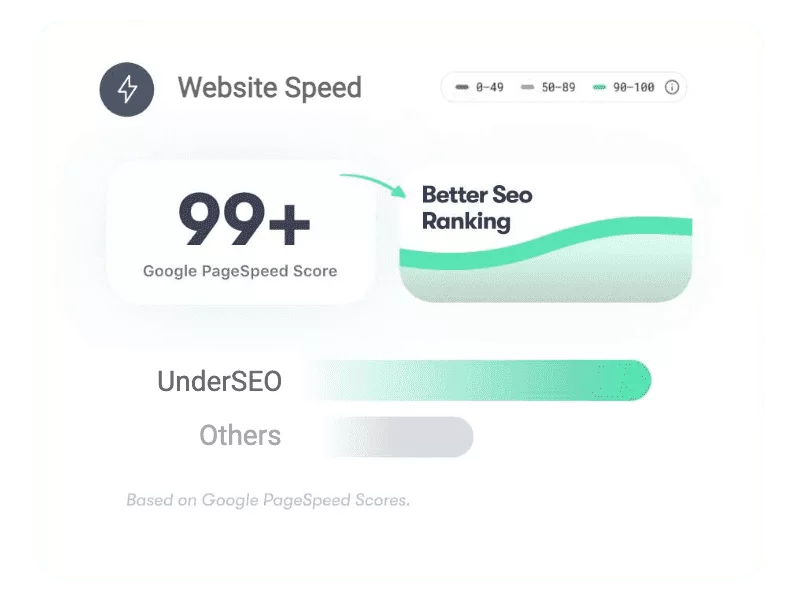
Need Some Help?
The Importance of On-Page Optimization for SEO
Conclusion
In conclusion, on-page optimization is an essential part of any successful SEO strategy. By optimizing your website’s meta tags, titles, heading tags, URLs, and content, search engines can easily determine what your page is about and rank it accordingly.
On-page optimization can also improve the user experience by providing high-quality and relevant content that satisfies searchers’ queries.
By including target keywords, optimizing image tags and file names, incorporating anchor text, and using structured data markup, you can enhance your search engine visibility and drive organic traffic to your website.
So, if you want to increase your website’s rank and ultimately boost conversions and revenue, investing in on-page SEO is a must.

